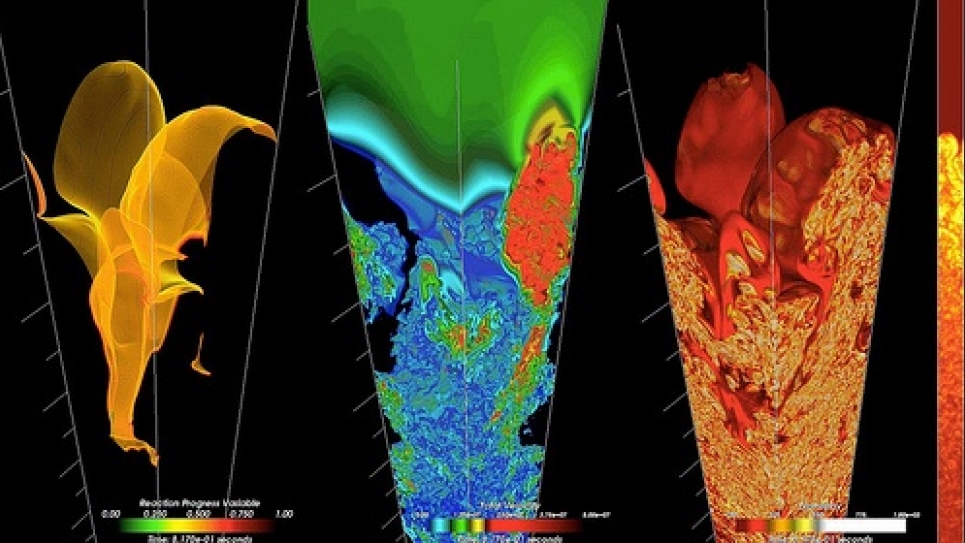
Illuminating Scientists' Knowledge of the Universe with "Standard Candles"
Researchers are studying critical aspects of Type Ia supernovae, among the brightest and most powerful exploding stars in the universe. Type Ia create many of the elements from which we are made and are important for measuring distances in the universe.
Observations using Type Ia as “standard candles” revealed that the expansion rate of the universe is accelerating and led to the discovery of dark energy. Understanding dark energy ranks among the most compelling problems in all of physical science. Most scientists believe that using Type Ia to determine the properties of dark energy will require accurate simulations of Type Ia and quantification of the uncertainties in the predictions made by these simulations.
Two major challenges facing Type Ia supernovae exist:
- Buoyancy-driven turbulent nuclear burning, which is a key physical process in Type Ia, is not fully understood; and
- Few simulations of the four current models of Type Ia have been done, making it difficult to determine which of these models is favored by observations, and even more, what values of the many parameters specifying these models are consistent with observations.
Approach
Researchers are using computational resources available through the U.S. Department of Energy’s INCITE program to meet both of these challenges. Using the FLASH code on Intrepid, the IBM BG/P supercomputer at the Argonne Leadership Computing Facility (ALCF), they are seeking definitive answers to the questions: “Is buoyancy-driven turbulent nuclear burning due primarily to large-scale or small-scale features of the flame surface?” and “At what physical conditions does turbulence tear apart the flame?” In carrying out these two studies, they will build on their success in conducting the largest homogeneous, isotropic, weakly compressible turbulence simulation done to date.
Results/Accomplishments
The results of these two studies have the potential to produce a major paradigm shift in the Type Ia field. The results of the first study will eliminate one of the largest uncertainties in simulating Type Ia. The results of the second study will determine whether the transition from the flamelet burning regime to the distributed burning regime can take place in Type Ia with profound implications for two of the four current Type Ia models.
Working together, the Flash Center and ALCF staff have optimized the FLASH code to run efficiently on all 163,840 processors of the IBM BG/P supercomputer at the ALCF for the buoyancy-driven turbulent nuclear burning simulations. To date, the team has used 40 million processor hours on the BG/P to run a grid of simulations for different physical conditions. They have also developed parallel processing tools needed to analyze the large amounts of data produced by the FLASH simulations of buoyancy-driven turbulent nuclear burning. Preliminary analysis of these results shows that the flame surface is complex at large scales and smooth at small scales.
Future Efforts
Conducting the larger and more complex simulations needed to determine the physical conditions at which turbulence tears apart the flame will be the next step. The results of both studies will be used to treat buoyancy-driven turbulent nuclear burning more accurately in the Flash Center’s whole-star, three-dimensional simulations of Type Ia.